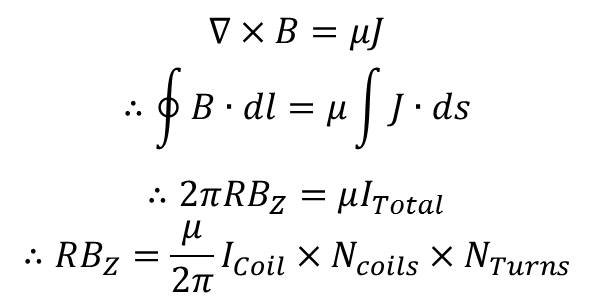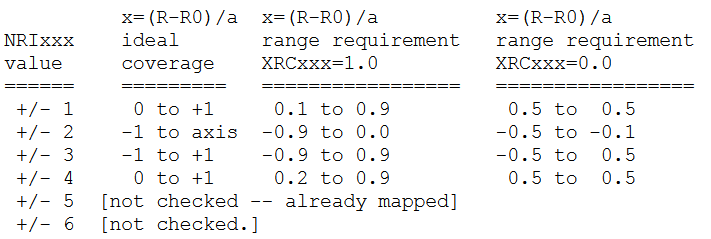

Information about the diagnostic entries can be found here. This page details the other controls in the TRDAT namelist section.
TIME0=40.0 : This specifies the start time of the plasma and is subtracted from the time base of all input Ufiles. It should always be set to 40.0s for JET.
INPUTDSK & INPUTDIR : Set these to overwrite the disk and directory where the input Ufiles are located. The Ufiles will be searched for in the directory INPUTDSK:INPUTDIR.
LFIXUP : This switch controls unit conversion for Ufiles. Setting it to 2 supports conversion of units ( e.g. conversion of KeV to eV ) and also switching of axes and is the recommended settting. The default is 1 which enforces strict unit conventions, if unsupported units are detected the data is rejected. For the other possible settings see the PPPL website.
Scale factors can be set for each diagnostic via the use of the variables SC_xxx. For example to scale the surface loop voltage one
would assign a value to the variable SC_VSF. These scale factors overwrite unit conversions performed by TRDAT. When performing runs at JET the following scale
factors should be used:
SC_VSF=-1.0 : The convention for the surface loop voltage in TRANSP is that a positive voltage drives current in the
direction of the main plasma current. The PPF EFP/VPA returns a negative loop voltage and so a scale factor of -1.0 should be used to correct this. SC_RCY=10.0 : This scale factor is an empirically based conversion factor between the measured edge D-alpha light and
the actual rate of neutral influx into the plasma. It is based on experiments on TFTR. For more information see this talk by Hyun-Tae Kim. SC_RBZ=768.0 : MAGN/ITOR specifies the toroidal field coil current in Amps therefore a unit conversion
is required to convert this input to the value of as demonstrated below.
TRDAT internally deals with the prefactor which means that this scale factor must be set to the product of the number of coils on JET and the number of turns per coil which is 32x24=768.
Depending on the choice of NRIxxx, TRDAT performs range checks on the supplied input data for each diagnostic. The behaviour for each value of NRIxxx
is defined in the table below. The stringency of the check is controlled by a variable XRCxxx (where again xxx indicates a particular trigraph)
which can take a value between 0.0 and 1.0. The table defines the behaviour for values of 0.0 and 1.0 respectively. The default is 1.0 and supplying a value less than 1.0 reduces the
stringency of the check. Supplying a negative value for this variable turns off range checking for that diagnostic. A global range check variable
RMJCHK exists but its use is not recommended.

NLRNNE : Setting this to true will renormalise the electron density profile using line integrated density data. The line integrated density profiles
are specified using PRELID and EXTLID.
DLAMDA : This specifies the wavelength of the interferometer in cm. It is required if this is not specified in the LID Ufile.
XDGLID : Specifies an upper limit value of r/a on the interferometer data to use when performing the renormalisation of the electron density
data. The default is to use all data provided.
NLRNTE : Set to TRUE to renormalise the electron temperature data to the scalar profile specified using PRETET and EXTTET.
RMJRTE : Specifies the major radius to use when performing the temperature renormalisation to scalar data. By default the peak value of
the profile data is renormalised to the scalar data.
XFRTE : This variable configures how the renormalisation is performed. The renormalisation factor is
1 + [ TET/TER(RMJRTE) - 1 ]*XFRTE. Consequently setting XFRTE equal to 1.0 scales TER(RMJRTE) to TET and setting it equal to 0.0 would turn off the
renormalisation.
NLRNTI : Set to TRUE to renormalise the ion temperature profile data to the scalar profile specified using PRETIT and EXTTIT.
Variables RMJRTI and XFRTI exist and perform a function corresponding to that described above for the electron temperature.
NLRNVP : Set to TRUE to renormalise the rotation profile data to the scalar profile specified using PREVPH and EXTVPH.
Variables RMJRVP and XFRVP exist and perform a function corresponding to that described above for the electron temperature. This option is not
recommended for use, see the TRANSP webpage for further information.